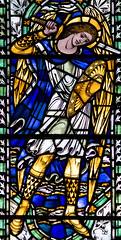 Image by Lawrence OP via Flickr
Image by Lawrence OP via Flickr
This is the second of three posts, summarising some emerging thoughts following my commentary on one light: one world.
Ecumenism, certainly in recent decades, has been about the reconciliation of institutions. This is not uncontested. Ecumenism in Britain was largely Protestant until the breakdown of the English Covenant in 1982. By 1989 the Swanwick Agreement had formally abandoned this institutional approach. Swanwick abandoned the search for a single unified church.
However, since then for many it has been business as usual. The Anglican Methodist Covenant, for example, has always been seen as a step towards interchangeability of ministry and ultimately visible unity between the two churches.
It is difficult to justify this approach from the Bible. All the passages I read in the one light: one world sequence, dealt not with institutions but the behaviour of individuals. This should come as no surprise as there was no institutional church at the time the earliest New Testament letters.
That is not to say institutions are not a preoccupation of the Bible. We only need to read Walter Wink about the powers, to find the Bible has a lot to say about the dangers of institutional power. At best we are encouraged to be sceptical about formal structural unity. Such unity would be exclusive were it to happen.
This is not in any way to devalue the progress made in formal conversations. These conversations have cleared the way for Christians to recognise one another as real Christians and one another's institutions as real churches.
It seems the Bible questions institutional unity and encourages us to love across our artificial boundaries.


Comments